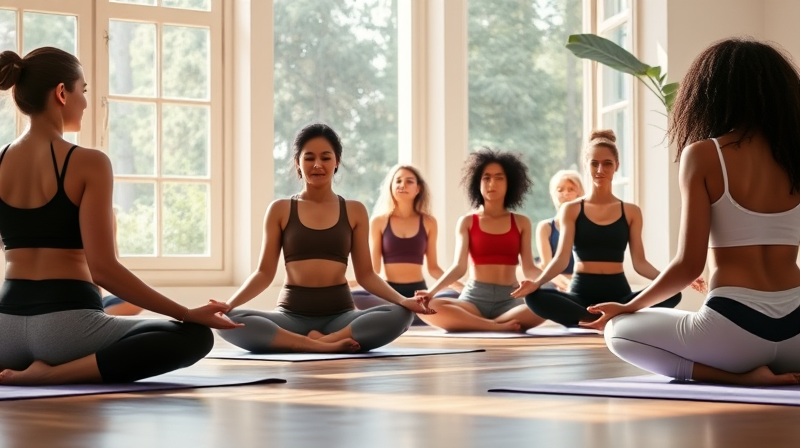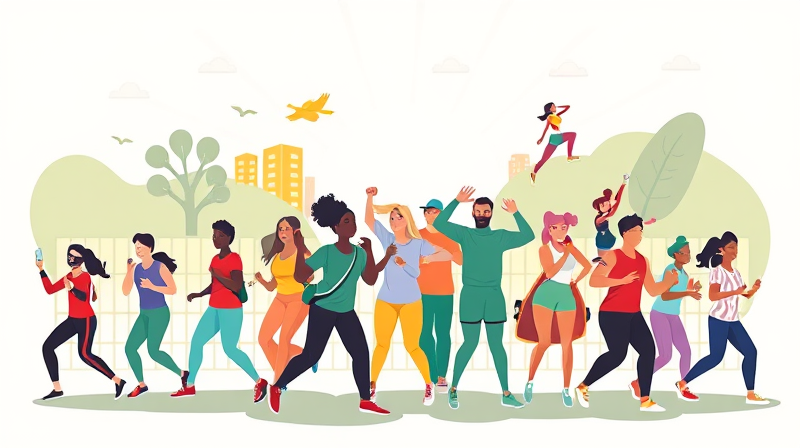Embarking on your yoga journey can be both an exciting and transformative experience. Whether you aim to build inner peace, enhance physical strength, or simply explore a new form of self-care, this guide will help you take your first steps with confidence and inspiration. Beginners always hold the key to unlocking creativity and mindfulness in their practice, starting with simple poses that build the foundation for deeper exploration ahead.
Yoga is more than just a series of movements; it is a way to connect your body, mind, and spirit. With regular practice, you can cultivate balance, flexibility, and mental clarity, while also discovering a space for healing and self-reflection. In this article, we will explore essential poses, gentle backbends, and seated stretches that are beginner-friendly, along with tips to integrate relaxation and breathing exercises into your routine.
Foundation Poses for a Steady Start
For those new to yoga, the foundation poses are the building blocks of a strong practice. Among these, the Mountain Pose (Tadasana) is heralded as the mother of all poses. This simple yet powerful alignment helps you establish a sense of groundedness and stability.
To practice Mountain Pose, begin by standing with your feet together and your arms relaxed at your sides. Feel the connection with the floor as you press the four corners of each foot into the mat. As you engage your leg muscles and tuck your tailbone, take a slow, deep inhale to elongate your torso and extend your arms upward. With each exhale, allow your shoulder blades to roll back, releasing tension and promoting a sense of openness throughout your upper body. This pose not only improves posture but also sets the tone for a mindful practice.
Another essential pose is the Child's Pose (Balasana). Ideal for moments when you need a break, this gentle pose allows your body to reset and relax. Sit back on your knees, reach forward to rest your torso on the mat, and let your forehead gently touch the ground. As you settle into this position, allow your mind to quiet and your breath to deepen, restoring your energy for the next sequence.
The Cat-Cow Pose (Marjariasana) serves as an excellent flow to warm up your spine. Moving gracefully between arching and rounding your back, this dynamic pose expands your chest and prepares your body for more challenging maneuvers. Connect each movement with your breath to experience a natural rhythm that enhances both flexibility and energy flow.
Beginner-Friendly Standing Poses
Standing poses are crucial for building balance and strength. The universally recognized Downward Facing Dog (Adho Mukha Svanasana) not only stretches the hamstrings and calves but also develops upper body strength. This pose features prominently within many yoga routines and can be seamlessly integrated into your practice as a transitional movement that prepares you for deeper poses.
Complementing Downward Facing Dog is the Extended Puppy Pose. This pose provides a comfortable blend between the restorative Child's Pose and the energizing nature of a full downward dog. It gently stretches the spine, calming the mind and paving the way for a smooth transition as you build up your strength and flexibility.
Furthermore, the Garland Pose (Malasana) offers a significant benefit for pelvic floor health and digestion. By lowering yourself into a deep squat with feet close together, you encourage the release of tension in the hips and lower back. If you find that your heels do not touch the floor, simply place a folded blanket underneath for support, making this pose accessible and effective for every practitioner.
Exploring Gentle Backbends and Seated Stretches
Introducing gentle backbends into your routine can help counterbalance forward folding poses. The Sphinx Pose is a soft entry into the realm of backbending. Lying on your stomach with forearms on the ground, this pose permits you to explore extension in your spine while remaining gentle and controlled. Adjust the degree of effort by engaging or relaxing your back muscles, ensuring that the movement remains comfortable.
The Locust Pose (Salabhasana) builds on this concept by activating the muscles in your back, legs, and arms. This pose not only fortifies the back of your body but also prepares you for more advanced backbends down the line, making it a cornerstone for strength-building practice.
For a broader stretch that energizes your body, try the Fish Pose (Matsyasana). Known to combat fatigue and bolster overall energy, this pose involves a gentle arch in the upper back and a welcoming stretch in the shoulders. According to traditional practices, performing this pose in water can even evoke a serene, floating sensation.
Seated poses also offer significant physical and mental benefits. The One-legged Forward Bend (Janu Shirasana) provides an inclusive stretch through the entire body while incorporating a mild spinal twist. This position is named after its Sanskrit roots—'janu' meaning knee, 'sirsa' meaning head, and 'asana' meaning pose—and serves as a versatile addition to any practice.
The Wide-Angle Seated Forward Bend (Upavistha Konasana) is designed to open the hips and stretch the inner thighs. As a preparatory pose, it facilitates smoother transitions into seated forward bends, standing poses, and twists, each contributing to enhanced flexibility and alignment.
Another unique seated posture is the Cow Face Pose, which might feel unconventional at first glance. With its distinctive arm and leg positioning, this pose delivers a profound shoulder stretch and invites new energy into your practice.
Embracing Relaxation and Breathing Techniques
Integral to any yoga practice is a moment of calm and introspection. The Savasana (Corpse Pose) serves as your final, restorative posture where you allow your body to assimilate the benefits of yoga. In Savasana, remain still and focus on the natural rhythm of your breath, giving yourself the opportunity to be fully present and centered.
Breathing exercises, such as the Ujjayi breath, are also highly recommended for beginners. This controlled, deep breathing technique encourages a meditative state, helping to anchor your mind even as you move through more active sequences. Consistent practice of these techniques can lead to improved focus, reduced stress, and an overall sense of well-being.
- Begin slow and steady with foundational poses to build your routine.
- Incorporate both static and dynamic poses to nurture strength and flexibility.
- Always listen to your body and take breaks as needed.
- Integrate breathing exercises and moments of stillness to ground your practice.
As you grow in your practice, consider exploring sequences such as the Sun Salutation, which weaves together multiple foundational poses into a harmonious flow. Remember, the joy of yoga lies in its ability to transform your experience of the world both inside and out.
Yoga is a journey of self-discovery and evolution. By starting with these accessible poses, you nurture a practice that supports a lifetime of growth, strength, and inner balance. Embrace each movement with patience and kindness, celebrating even the smallest achievements. This mindful approach not only enriches your yoga practice but also brings greater harmony and insight into every aspect of your life.
In closing, take heart in the simple truth that every step on your yoga journey is meaningful. Whether you are stretching for physical well-being or meditating for mental clarity, your commitment to practice is a profound act of self-care and love. Let each pose remind you of your strength and resilience as you forge a deeper connection with your body, mind, and spirit.








